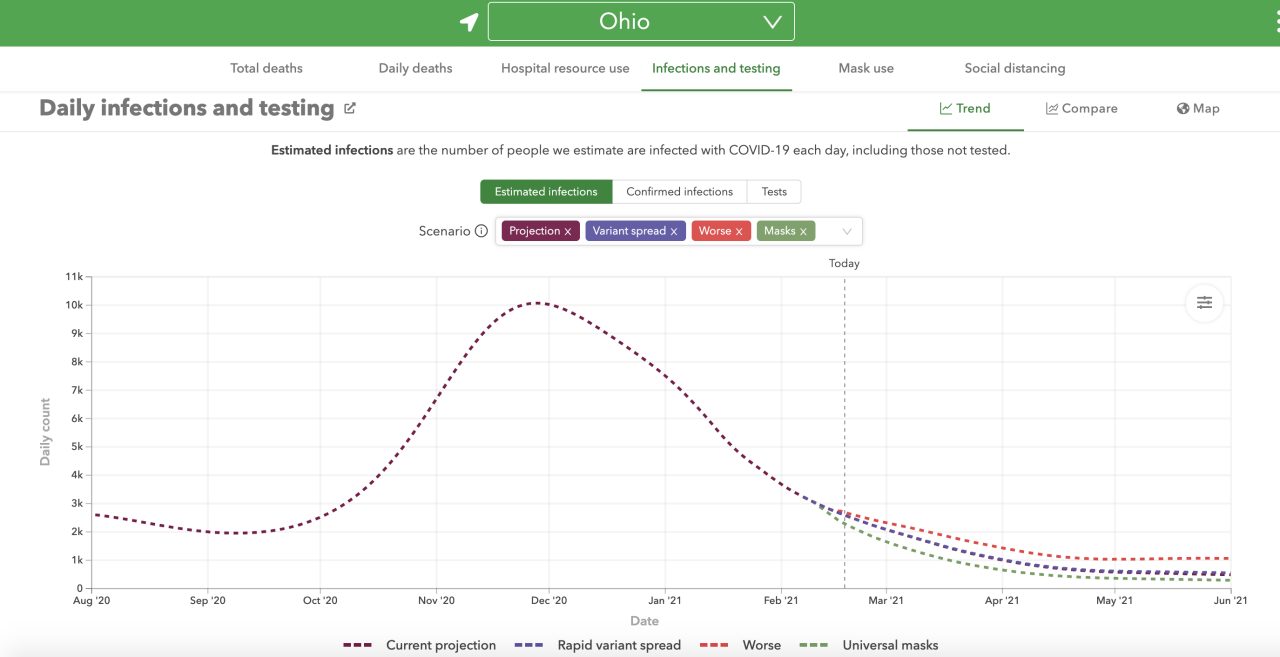MANSFIELD, Ohio — The number of positive coronavirus cases continues to decline statewide, now hovering at around 2,000 new cases a day.
That's about half as many compared to the beginning of February, and about a quarter as many compared to the beginning of the year.
At the same time, the Ohio vaccination dashboard shows that 1.36 million Ohioans have been vaccinated, which equates to about 11% of the population.
Experts agree that there’s no doubt the vaccines play a prominent role in lowering the number of new coronavirus cases.
But does that mean the coronavirus will disappear anytime soon?
News 5 reached out to state leaders and medical experts to help answer the question.
Lieutenant Governor Jon Husted spoke to News 5 while visiting Richland Public Health in Mansfield, where 100 individuals received a dose of the vaccine.

"I’d like to have more vaccine, I think we all would," he said. "The vaccine and masks have really allowed us to turn the corner here."
The site is one of about 700 providers across the state administering the vaccine. However, the Lieutenant Governor told News 5 there are more than 2,700 providers willing to help.
"Ultimately it’s about saving people’s lives and giving back the quality of life that they once enjoyed," he said. "That strategy is working. The one missing ingredient, it’s not a complaint, it’s a reality: we just don’t have enough supply of the vaccine."
Husted explained he believes Ohio can reach herd immunity before next winter, as long as people are willing to receive the vaccine.
"Right now, there's an excess demand and not enough supply. At some point, that's going to cross where you're going to have a certain percentage of people will say this thing has gone away and I'm young and I really don't need it. Yeah, you need it. We don't want to allow the vaccine to keep finding a host."
We asked those same questions to Dr. Ali Mokdad, the lead researcher at the University of Washington's Institute for Health Metrics and Evaluations, known as IHME.
"Yes, unfortunately, this virus will be with us for a while," Mokdad said. "We’re not going to reach herd immunity by next winter and we know because of past experiences this virus is seasonal and it will increase again next winter."
For the past year, his team examined the data behind COVID-19 cases to help project the best case and worst case of what the future looks like, taking into account mask use, vaccines, and social distancing.

While the numbers trend in the right direction, Mokdad points to one part of the population as the main reason the virus will stick around.
"It's important because for herd immunity you want 80%, 85% of people to be immune," he said. "Right now, simply because children are excluded, we’re not going to reach the herd immunity we need."
That means, like the flu, Mokdad said the coronavirus could mutate into something the current vaccines cannot protect.
"With viruses like COVID-19, the more this virus is circulating, the more likely this virus to mutate," he said. "That’s the biggest concern. It’s not only circulation, it's mutations. You take Cleveland for example. You have 1,000 infections a day. At least, the virus has 1,000 chances to mutate."
Late last year, one local pediatric office in Northeast Ohio announced plans to work with Pfizer on a study vaccinating children age 12 to 15.
The Lieutenant Governor told News 5 he hopes to see children across the state vaccinated this year.





